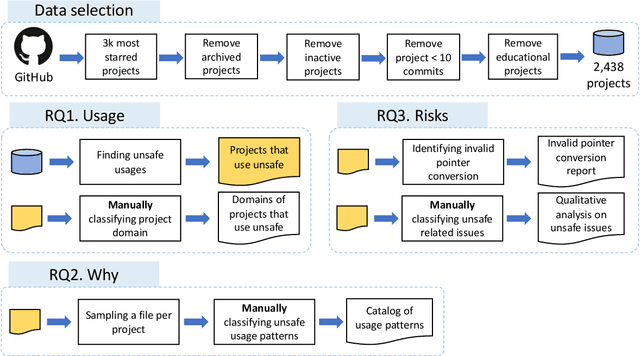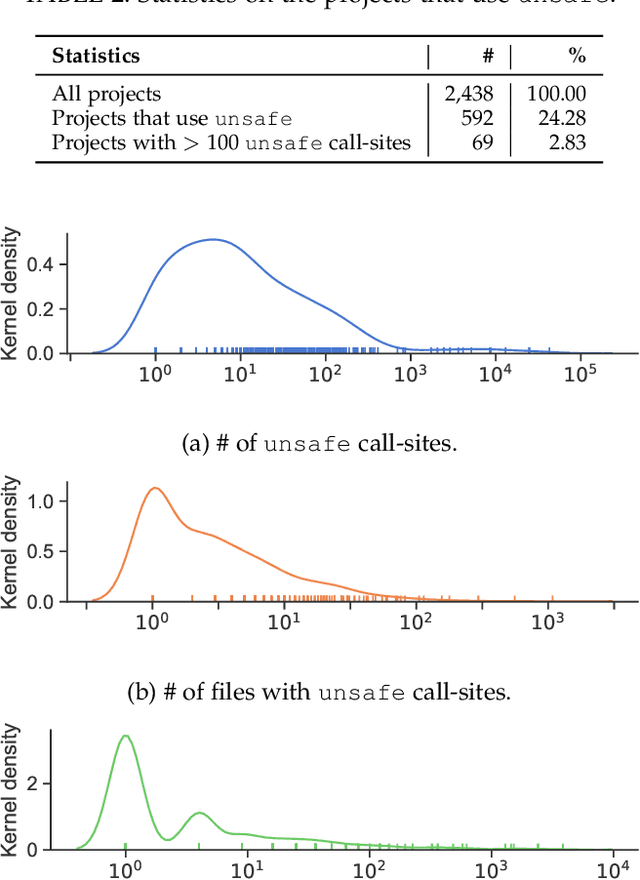Breaking Type-Safety in Go: An Empirical Study on the Usage of the unsafe Package
Paper and Code
Jun 17, 2020



A decade after its first release, the Go programming language has become a major programming language in the development landscape. While praised for its clean syntax and C-like performance, Go also contains a strong static type-system that prevents arbitrary type casting and arbitrary memory access, making the language type-safe by design. However, to give developers the possibility of implementing low-level code, Go ships with a special package called unsafe that offers developers a way around the type-safety of Go programs. The package gives greater flexibility to developers but comes at a higher risk of runtime errors, chances of non-portability, and the loss of compatibility guarantees for future versions of Go. In this paper, we present the first large-scale study on the usage of the unsafe package in 2,438 popular Go projects. Our investigation shows that unsafe is used in 24% of Go projects, motivated primarily by communicating with operating systems and C code, but is also commonly used as a source of performance optimization. Developers are willing to use unsafe to break language specifications (e.g., string immutability) for better performance and 6% of analyzed projects that use unsafe perform risky pointer conversions that can lead to program crashes and unexpected behavior. Furthermore, we report a series of real issues faced by projects that use unsafe, from crashing errors and non-deterministic behavior to having their deployment restricted from certain popular environments. Our findings can be used to understand how and why developers break type-safety in Go, and help motivate further tools and language development that could make the usage of unsafe in Go even safer.
 Add to Chrome
Add to Chrome Add to Firefox
Add to Firefox Add to Edge
Add to Edge